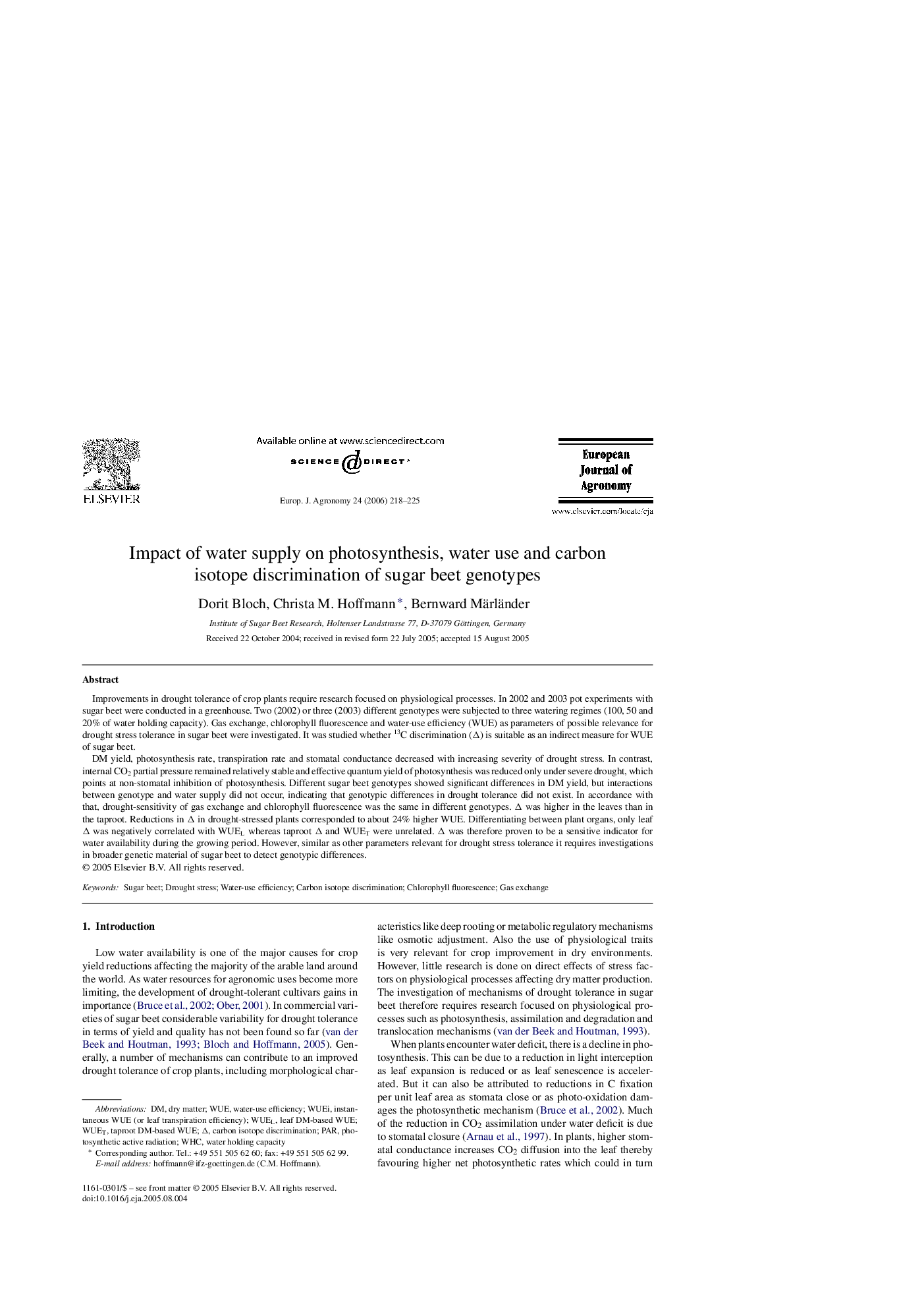| Article ID | Journal | Published Year | Pages | File Type |
|---|---|---|---|---|
| 4509776 | European Journal of Agronomy | 2006 | 8 Pages |
Improvements in drought tolerance of crop plants require research focused on physiological processes. In 2002 and 2003 pot experiments with sugar beet were conducted in a greenhouse. Two (2002) or three (2003) different genotypes were subjected to three watering regimes (100, 50 and 20% of water holding capacity). Gas exchange, chlorophyll fluorescence and water-use efficiency (WUE) as parameters of possible relevance for drought stress tolerance in sugar beet were investigated. It was studied whether 13C discrimination (Δ) is suitable as an indirect measure for WUE of sugar beet.DM yield, photosynthesis rate, transpiration rate and stomatal conductance decreased with increasing severity of drought stress. In contrast, internal CO2 partial pressure remained relatively stable and effective quantum yield of photosynthesis was reduced only under severe drought, which points at non-stomatal inhibition of photosynthesis. Different sugar beet genotypes showed significant differences in DM yield, but interactions between genotype and water supply did not occur, indicating that genotypic differences in drought tolerance did not exist. In accordance with that, drought-sensitivity of gas exchange and chlorophyll fluorescence was the same in different genotypes. Δ was higher in the leaves than in the taproot. Reductions in Δ in drought-stressed plants corresponded to about 24% higher WUE. Differentiating between plant organs, only leaf Δ was negatively correlated with WUEL whereas taproot Δ and WUET were unrelated. Δ was therefore proven to be a sensitive indicator for water availability during the growing period. However, similar as other parameters relevant for drought stress tolerance it requires investigations in broader genetic material of sugar beet to detect genotypic differences.
